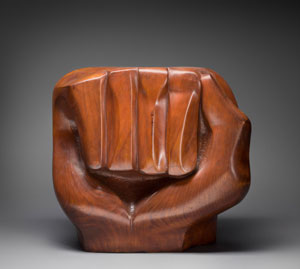1.15.25 — A Universe of One
I could not make it to the Whitney at dawn, and I could not have entered if I had. Still, on a screen by the window, sunlight crossed the horizon and reflected on the water.
What could be more impressive than sunrise at noon—and more representative of landscape art? I should have read the title or, at the very least, noticed that I was facing west toward the Hudson. This is Artie Verkant’s Exposure Adjustment on a Sunset, and the sun’s hazy yellow sphere and broad band of white are equally an illusion. Give him a little time, and they will dissolve in pixels anyway. 
The museum is out to alter the very idea of landscape in art, just as Verkant has taken it from painting to video. It sees contemporary art from its collection as “Shifting Landscapes” through January—and I work this in with earlier reports on two other landscape painters, Paul Paiement and Hilary Pecis, as a longer review and my latest upload. The Whitney’s seventy-five artists also dissolve the distinction between human and animal, artifice and nature. It is oddly insular all the same. Maria Berrio could be speaking for them all when she calls a painting Universe of One. Still, if it seems arbitrary and downright incoherent, there will always be another dawn.
You have seen this often enough before. A museum rolls out a genre from art’s history and modernizes it in the interest of contemporary art and diversity. It could be self-portraiture, the female body, art’s materials, or blackness. It risks becoming not so much a theme, since a show’s rooms will have their own themes, as a tic. Jennie Goldstein, Marcela Guerrero, and Roxanne Smith as curators take that model from the body into landscape painting. If neither landscape nor painting is all that evident, you will not be surprised.
That may be the Hudson out the west window, but this is not the Hudson River School. The very first room takes things off the canvas once and for all. Its theme of “Borderlands” makes sense when elections turn on immigration, but is art still crossing borders? Leslie Martinez applies pumice, paint chips, and rags, and you will just have to take her word for it that they reflect the accumulation of objects and cultures in a human life. Huge mossy creatures lie on a bed of turf for Amalia Mesa-Bains, while flames spread at night on a grid of ceramic chips by Teresita Fernández. She didn’t start the fire.
The flames may refer as much to climate change as to borderlands, and the next section speaks to the altered landscape. Robert Adams photographs industrial sites in Colorado. Dance for Nicole Soto Rodríguez alludes to sites and customs in Puerto Rico, but as performed on video and on a luxuriant staircase at home. What, then, could show the land’s transformation better than New York? Cityscapes here just may not have much to do with the urban landscape. They make room for Keith Haring, of all people, and (New York New Wave) Jean-Michel Basquiat.
See a pattern here? On the one hand, seemingly anything fits. On the other hand, pretty much anything that you might expect does not. That includes the entirety of history. This is not about mixing old work and new for fresh perspectives on both. Painters and photographers from the Ashcan School and the Harlem Renaissance to William Klein and Ming Smith have immersed themselves in the city, but not here. Just a floor below, a show for Alvin Ailey has ample space for the African American South. All “Shifting Landscapes” can show is a lone Gees Bend quilt and some cluttered assemblage.
The recent past does enter a room for earthworks—and just as quickly withdraws. Robert Smithson and Walter de Maria are nowhere to be seen, but Nancy Holt is, with the field locator that showed her the way. So is Agnes Denes, with photos of her wheat field in Battery Park City, seen from an angle that leaves their setting and subject a mystery. Maya Lin has her Ghost Forest of cedar stumps, but one would never know her concern for climate change. One would never know, too, how much she has reshaped urban spaces, from the Vietnam Memorial in Washington to museum architecture in New York. While hardly earth art, Gordon Matta-Clark does get to climb a tree and to call it a dance.
A final section, the curators argue, makes explicit the humanity of nature. If this, though, is “Another World,” can it show humanity or nature? The title may sound like Surrealism or science fiction, but it also looks suspiciously like self-portraiture. It does, though, allow Firelei Báez to float amid flowers. And is that a furry black bear beside her? A living landscape need never be a universe of one.
Read more, now in a feature-length article on this site.

